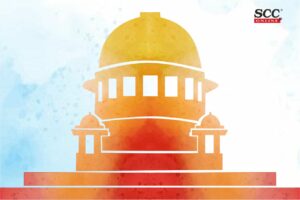Supreme Court: In a case where the inquiry under Section 5A of the Land Acquisition Act, 1894 was dispensed with despite there being no urgency, the bench of KM Joseph* and S. Ravindra Bhat, JJ, directing that the property be returned back to the appellants, has held that Section 5A of the Act guarantees a right to the person interested in the property which was the only statutory safeguard to stave off of a compulsory acquisition of his property and hence,
“In the ultimate analysis as with any other decision a balancing of conflicting interests is inevitable. The authorities must remain alive and alert to the precious right created in favour of the citizens which is not meant to be a mere empty ritual.”
Factual Background
A notification under Section 4(1) of the Act dated 8.10.2004 coupled with notification under 17(4) was issued in regard to 52.361 hectares of land for the construction of a residential colony under the name of Bulandshhar Khurja Development Authority, Bulandshehar. Declaration under Section 6 of the Act was published on 7.10.2005.
While the appellants did not raise any objection as the requirement of Section 5A of the Act stood dispensed with, they argued before the Court that despite the urgency clause being invoked, the possession was taken only in January 2006. Further, it was stated that till date on the spot neither any construction under the residential scheme has been started nor it ‘appears to be’ in the near future. Hence, it was argued that there was no urgency to dispense with the inquiry under Section 5A of the Act.
Exercise of power under Section 17 (4) be invoked to dispense with the requirement under Section 5A
Section 5A of the Act guarantees a right to the person interested in the property which was the only statutory safeguard to stave off of a compulsory acquisition of his property. The power under Section 17 (4) is discretionary. Being a discretion it must be exercised with due care. It is true that if there is relevant material however meagre it may be and the authority has without being guided by extraneous considerations applied his mind and taken a decision, then the court would adopt a hands-off approach.
“What is required of the authority is to form a subjective opinion. This does not mean that the opinion can be whimsical or capricious. There must be materials before the authority. The materials must be relevant. The authority must apply his mind to the material. This is apart from the requirement that action must not be malafide.”
Further, undoubtedly the purpose must be a public purpose. But merely because the purpose of the acquisition is found to be a public purpose, the duty of the authority does not end. He must be satisfied that there is real agency such that the invaluable right vouchsafed to a person to ventilate his grievances against the acquisition is not unjustifiably extinguished.
Manner in which a challenge to a notification under Section 17(4) must be approached
When a challenge is made to the invocation of power under Section 17 (4) the writ applicant cannot succeed on bare and bald assertions. The facts which are specifically within the exclusive knowledge of the state must be laid before the court on the basis of the principle in Section 106 of the Evidence Act. Existence of the exceptional circumstances justifying invoking of Section 17 (4) must be established in the wake of a challenge.
On an appreciation of the evidence made available by all the parties it is open to the court to conclude that no occasion arose for resorting to the power under Section 17 (4) which indeed must be read as an exception to the general rule that the acquisition of property is made after affording an opportunity the person adversely affected to demonstrate that the acquisition was unjustified.
Decision on Facts
The Court took note of certain facts that showed that there was no urgency at all associated with the need to acquire the land immediately which constitutes the foundation for invoking the urgency clause. The notification under section 17(4) came to be issued after more than two years of the proposal sent sometime in March, 2006 if not earlier. Further, the declaration under section 6 came to be 60 issued only on 9.4.2009, just two days prior to the first anniversary of the date of notification under section 4. What finally impelled Government to issue the notification, namely, the apprehension that if it is not issued within one year of the section 4 notification the acquisition would lapse. This had nothing to do with urgency which would have manifested in the section 6 declaration being issued much earlier.
Therefore, in the facts of this case, having regard to the nature of the scheme, the delay with which section 6 declaration was issued, possession taken and the nature of the material on the basis of which the proposal was processed, it was held that the appellants are justified in contending that the notification under 17(4) dispensing with the inquiry under Section 5A was unjustified.
The Court, hence, directed that the property be returned back to the appellants.
[Hamid Ali Khan v. State of UP, 2021 SCC OnLine SC 1115, decided on 23.11.2021]
Counsels:
For appellant: Advocate Abhay Kumar
For State: Senior Advocate Ravindra Raizada
For Second Respondent: Advocate Ravindra Kumar
*Judgment by: Justice KM Joseph

